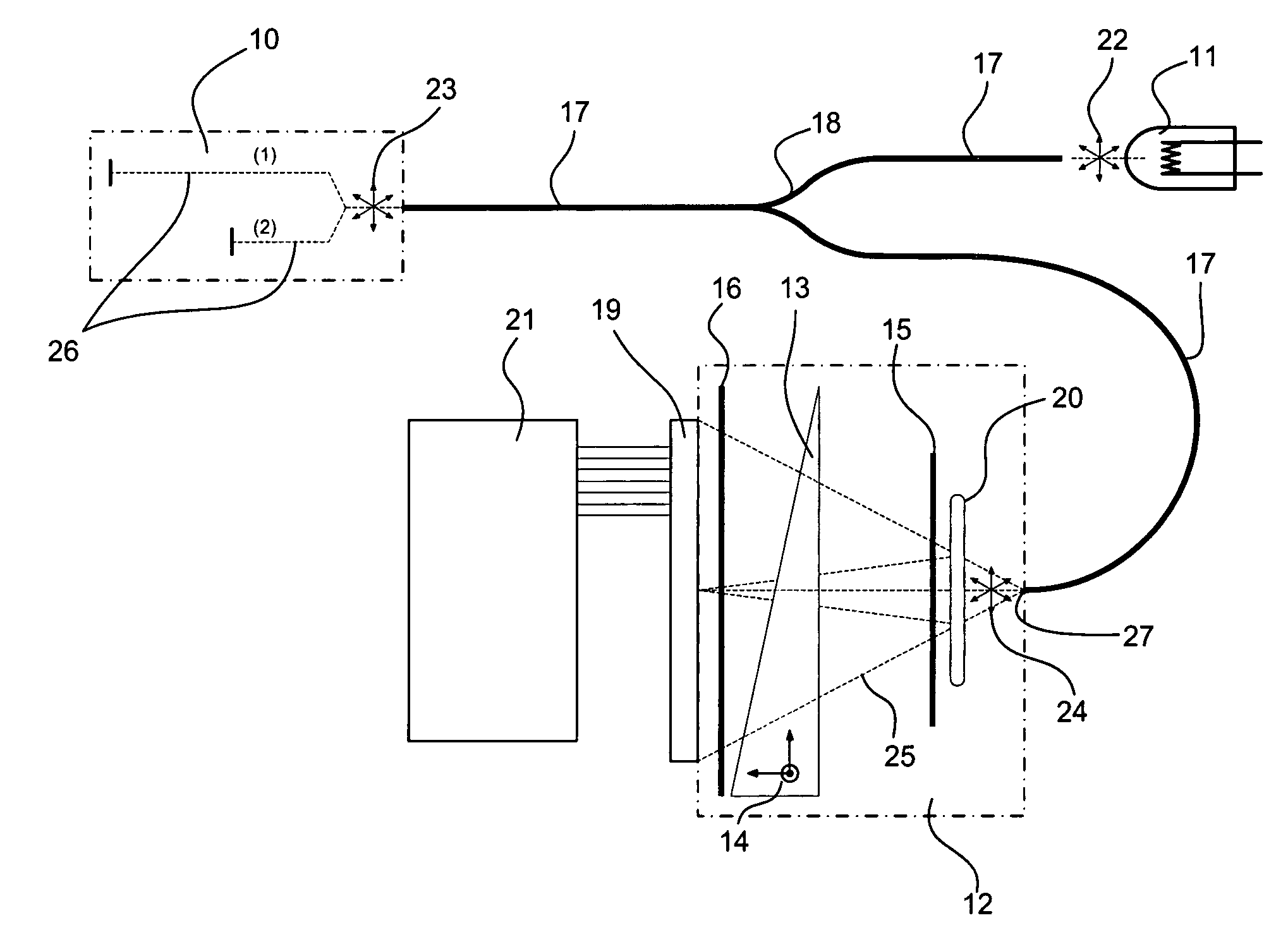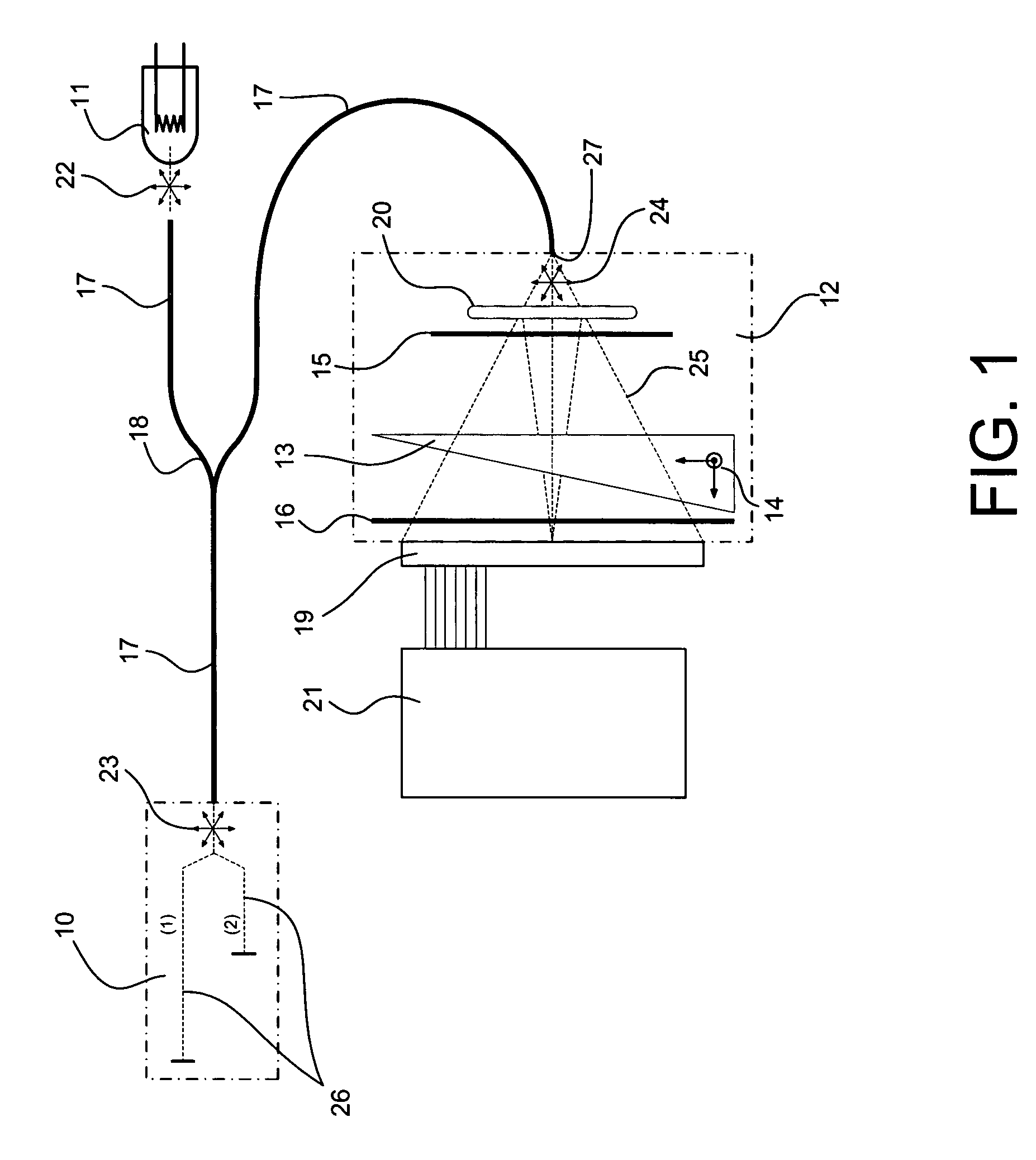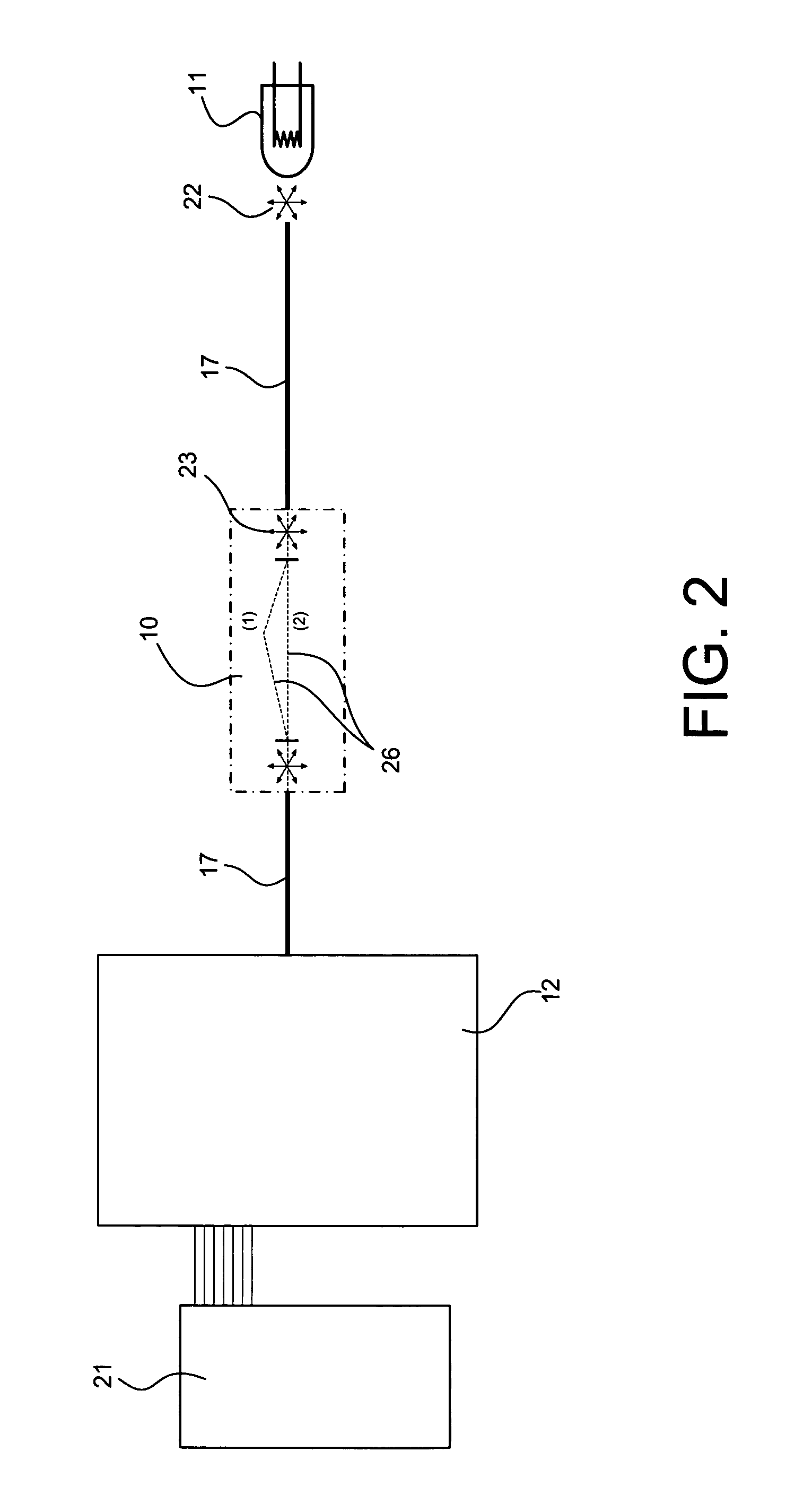Low-coherence interferometry optical sensor using a single wedge polarization readout interferometer
a low-coherence interferometry and optical sensor technology, applied in the direction of thermometers, instruments, convert sensor outputs, etc., can solve the problems of not being able to use standard measurement tools, the measurement suffers from a 2 phase ambiguity, and the optical sensor aimed at industrial applications and other non-laboratory type applications is likely to be exposed to severe environmental conditions. , to achieve the effect of simple and robust optical
- Summary
- Abstract
- Description
- Claims
- Application Information
AI Technical Summary
Benefits of technology
Problems solved by technology
Method used
Image
Examples
Embodiment Construction
[0047]In the following description of the embodiments, references to the accompanying drawings are by way of illustration of an example by which the invention may be practiced. It will be understood that other embodiments may be made without departing from the scope of the invention disclosed.
[0048]There are two basic configurations for the tandem interferometer optical sensor arrangement, which are the reflective and transmissive configurations. The optical sensor of the reflective configuration showed in FIG. 1 comprises a sensing interferometer 10 used in reflection mode and having its path length difference sensitive to the measured physical quantity. Preferably, the interferometer is a two-beam 26 interferometer, or a good approximation of this type of interferometer such as low finesse Fabry-Perot interferometer. A set of optical fibers 17 and an optical coupler 18 connect the sensing interferometer 10 to the light source 11 and to the readout interferometer 12. Light 22 emitt...
PUM
 Login to View More
Login to View More Abstract
Description
Claims
Application Information
 Login to View More
Login to View More - R&D
- Intellectual Property
- Life Sciences
- Materials
- Tech Scout
- Unparalleled Data Quality
- Higher Quality Content
- 60% Fewer Hallucinations
Browse by: Latest US Patents, China's latest patents, Technical Efficacy Thesaurus, Application Domain, Technology Topic, Popular Technical Reports.
© 2025 PatSnap. All rights reserved.Legal|Privacy policy|Modern Slavery Act Transparency Statement|Sitemap|About US| Contact US: help@patsnap.com



